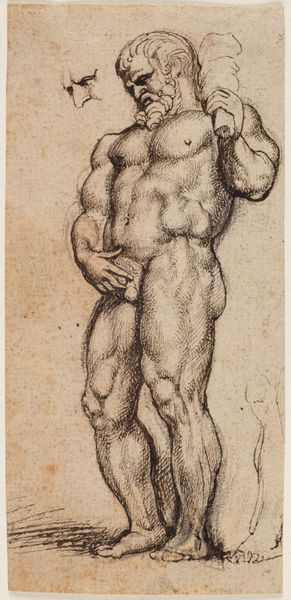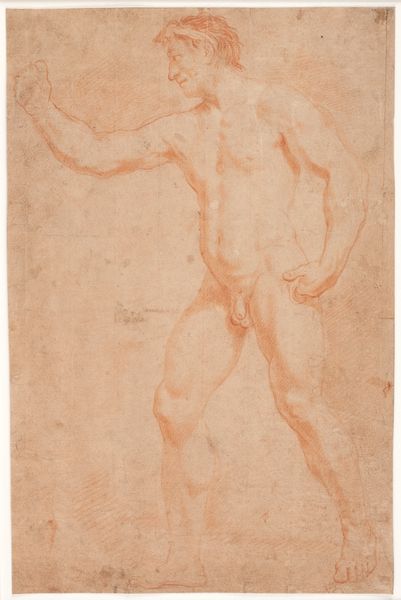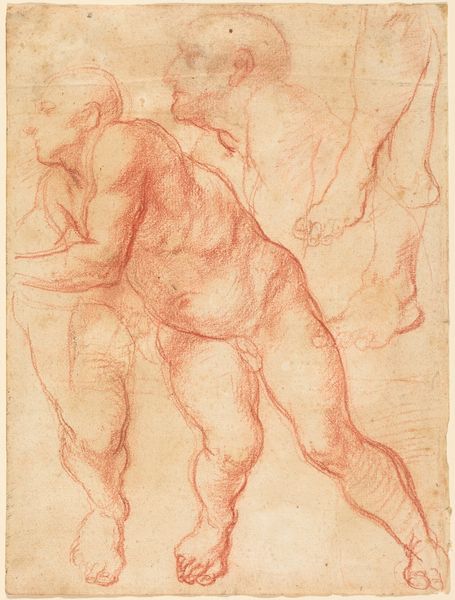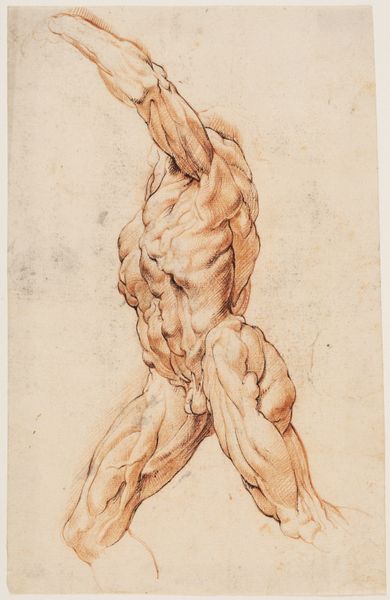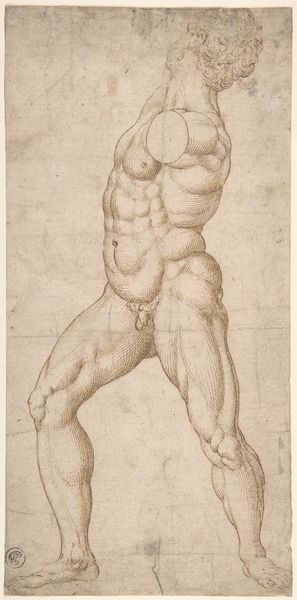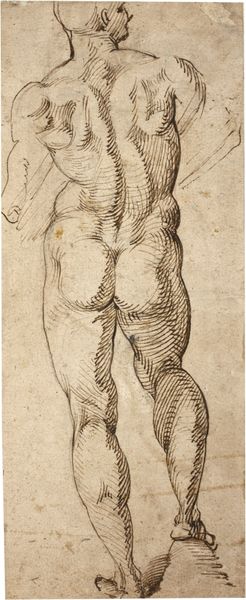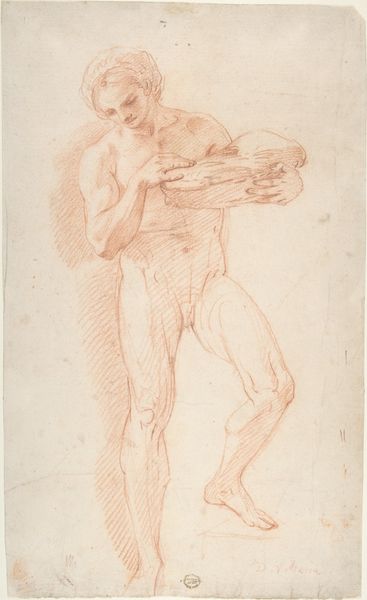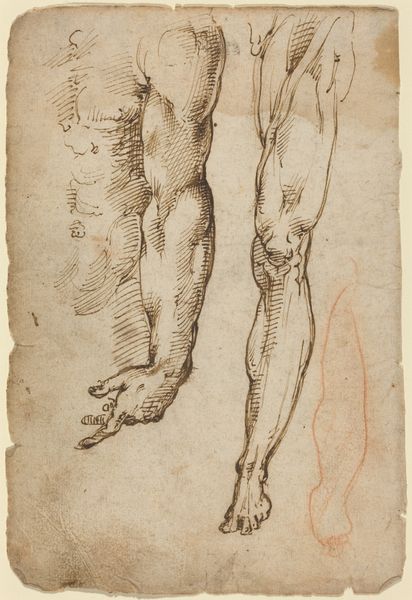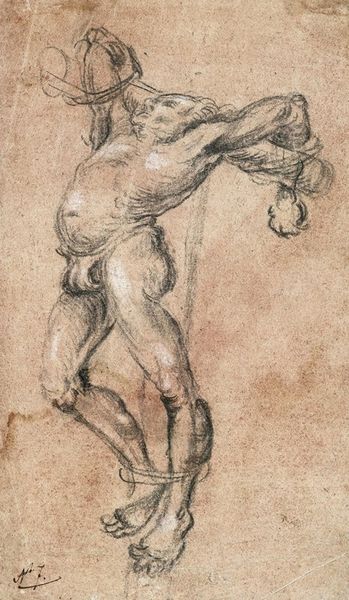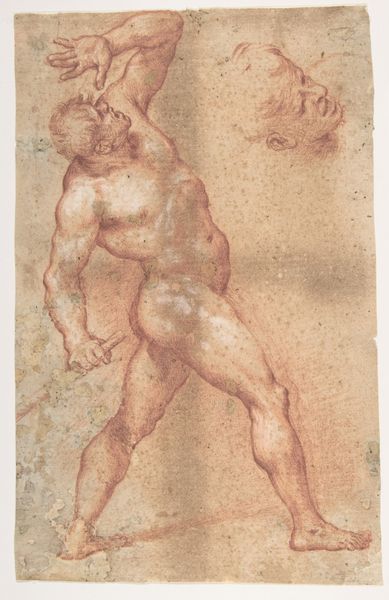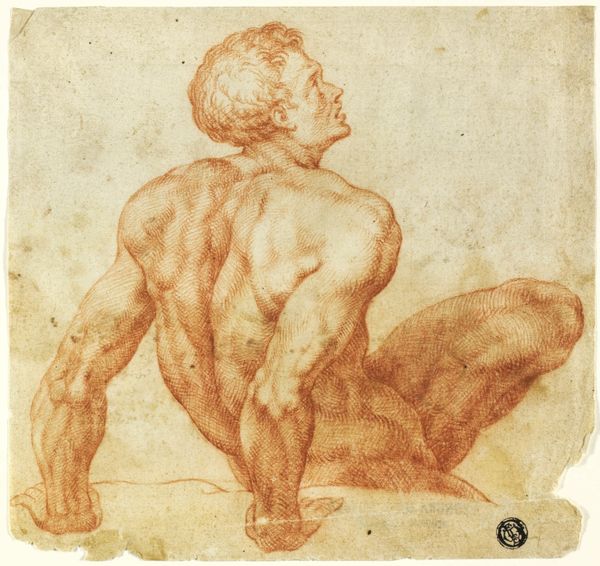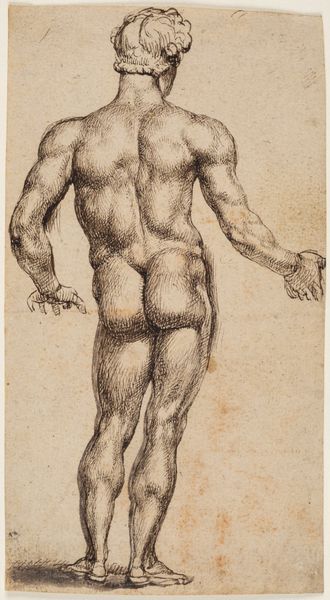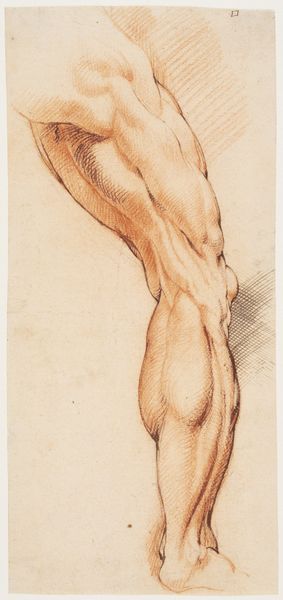
Studie van het onderlijf van een lopend mannelijk naakt 1622 - 1624
0:00
0:00
drawing, pencil
#
drawing
#
baroque
#
pencil sketch
#
charcoal drawing
#
figuration
#
pencil drawing
#
pencil
#
academic-art
#
nude
Dimensions: height 295 mm, width 219 mm
Copyright: Rijks Museum: Open Domain
Cornelis van Poelenburch rendered this study of the lower body of a nude male figure in red chalk. The dynamism of the walking pose is striking; the figure is caught mid-stride, his weight shifting, conveying a sense of motion and purpose. Consider the symbolic weight of the leg, a motif stretching back to antiquity. In classical sculpture, the contrapposto stance—weight resting on one leg—symbolizes balance, harmony, and the potential for action. Here, the leg becomes a conduit of power and vitality. Think of the Winged Victory of Samothrace, or even the striding colossi of ancient Egypt, their legs embodying triumph and dominion. But the image of a walking man is more primal: the compulsion to move and to journey. This symbol has continually evolved, taking on new layers of meaning, yet always rooted in the same ancient, life-affirming idea.
Comments
No comments
Be the first to comment and join the conversation on the ultimate creative platform.
